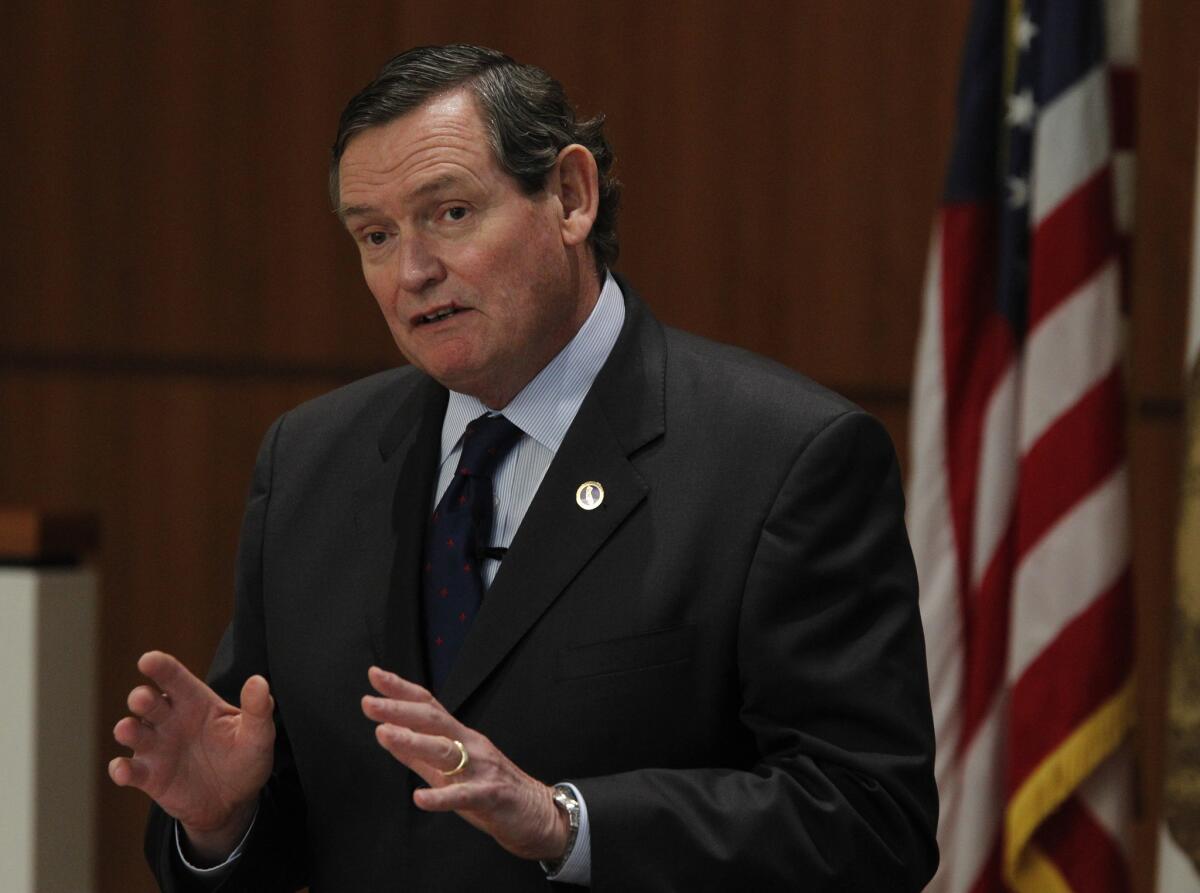Higher Learning: Using private funds for Cal State execs’ pay creates its own problems

A policy that permitted salaries of new executives to be boosted with private rather than state funds seemed like a savvy move when California State University leaders adopted it at the height of the recession.
Trustees were attempting to fend off criticism — from the governor, legislators, students and others — after having hired a new San Diego State president at a salary that was $100,000 higher than that of his predecessor. This was done at the same 2011 meeting at which trustees raised tuition 12%.
Using private foundation dollars to increase compensation for those who are public employees raised a host of questions — about accountability, conflict of interest, commingling of public and private money and whether the funds would be better spent on academic programs.
Those concerns, still unresolved, reemerged when the board of trustees approved 3% pay hikes for top executives, including the 23 campus presidents and Chancellor Timothy P. White in November. These are the first across-the-board raises since 2007, officials said.
The salary increases will be paid with public dollars. But for six of the presidents and White, the increase is calculated on compensation that includes funds from private, nonprofit campus foundations. Their main charge is to raise money for student scholarships, endowed faculty positions and academic programs.
Several trustees expressed reservations about using tax dollars to augment private money.
“I’m not comfortable using state funds to apply the 3% to the supplemental income; I don’t feel it’s appropriate,” said trustee Lupe Garcia, who suggested that the foundations ought to help pay for the salary hike.
But that would be tricky: After they are hired, most presidents join the board of the campus foundation. Asking the organization to help pay for a raise would create a conflict of interest, according to the system’s general counsel Framroze Virjee.
In addition, some foundations might balk, creating the potential for unequal treatment of the presidents. The trustees did agree that the entirety of compensation policies — including whether foundations should be involved at all — needs reevaluation.
That returns Cal State to the same uncomfortable dilemma it sought to resolve.
Under current policy adopted in 2012, the base, state-funded salary of a newly hired president can’t exceed that of his or her predecessor. But to recruit top talent, the campus foundation can contribute up to 10% more.
Not all of them do.
“The size of the campus, number of alumni and resources available are factors,” said spokesman Mike Uhlenkamp. “Not every foundation has the ability to do so.”
Other issues that might determine foundation support include the candidate’s current position and salary and whether a job opportunity elsewhere is offering more.
Any executive raises come with the question of whether those funds could have been used more effectively elsewhere, said Jason Constantouros, a fiscal and policy analyst for the state Legislative Analyst’s Office.
That office hasn’t determined what role, if any, the state should play on overseeing the use of private funds, he said.
“The board first has to determine what the appropriate salary is for executives and after that, what is the proper division between state and private funds; those are the appropriate ways to think about the issue,” he said.
The use of private money to enhance compensation is not unusual, said James P. Ferrare, a senior vice president of the Assn. of Governing Boards in Washington, D.C.
The University of California supplemented the salaries of newly hired chancellors of UC Berkeley, UC San Diego and UC Riverside with money from private, outside sources.
And boards are looking at creative incentives, such as merit increases based on raising graduation and retention rates, meeting fundraising goals and moving up on one or more of the ubiquitous college rankings, such as the Princeton Review, “as long as it’s transparent and legal and justified,” Ferrare said.
Nationwide, salaries are rising as institutions seek to keep presidents in place longer, Ferrare said.
Cal State officials, especially former Chancellor Charles Reed, have long argued that compensation must figure in market rates to attract the best leaders. A 2011 salary survey of comparable institutions determined that Cal State executives on average were paid 40% below their peers elsewhere.
But that survey was criticized for including a few large research institutions and those with medical centers. Gov. Jerry Brown has said that California’s public universities are not private corporations and that salaries should hold steady.
It appears now that Cal State is ready to revisit the issue, perhaps, as suggested by trustee Adam Day, sorting the campuses into tiers based on size, number of students, budget, geographic location, cost of living and established market rates on which to base compensation.
Trustees are likely to consider new policies in coming months, said Uhlenkamp.
“We’re not going to set the market rate,” he said. “But we do need to provide something that’s relative to what they could get somewhere else to entice them to come across the country. We want to compete on a national level.”
Ferrare agreed that Cal State has to remain competitive, but the nation’s largest public university system also needs to be transparent and open to public scrutiny.
“There are college presidents in some other parts of the country making $1 million,” he said. “Where they [trustees] go from here I don’t know, but they’re going to have to have a really good conversation.”
Twitter: @carlariveralat
More to Read
Sign up for Essential California
The most important California stories and recommendations in your inbox every morning.
You may occasionally receive promotional content from the Los Angeles Times.











